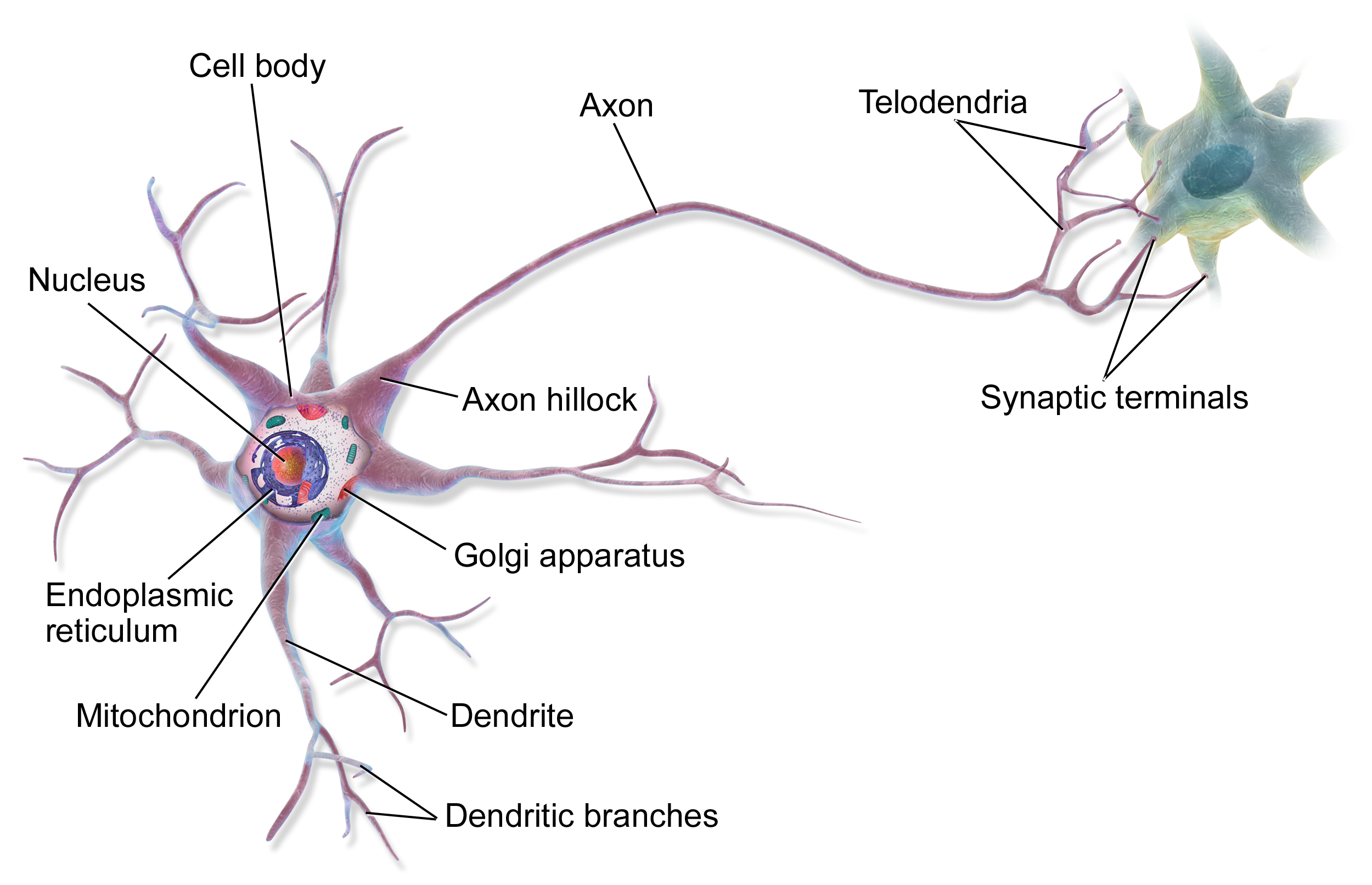In Unit 10 , we learned about the different systems that help the body function, which included Homeostasis, Nervous System, Digestive system, Circulatory system, Respiratory system, Endocrine System, and Lymphatic System with Inflammatory Response. The Homeostasis vodcast talks about different ways our body maintains a constant temperature, using Positive(above set point) or Negative Feedback(above or below set point), and whether it is a Behavioral or Physiologial response. Also, it explains the difference of Thermoregulation( temperature rises and temperature decreases depending on body temp.) and Osmoregulation(keeping osmiality in blood). Differentiation is surpassing several genes, and Apoptosis is death of cells, and we use Circadian Response to respond to time.
Next, we learned about the Nervous System which contains Central Nervous System(brain and its' stem, spinal cord,sensing stimuli) and Peripheral Nervous System(Crinal Nerves, Spinal Nerves). The Central Nervous System contains the cerebrum(thought, movement), Dicephalon(coordinates with endocrine system, Cerebellum(Calculates force & direction of muscle contraction), and brain stem which controls the reflexes, and other basic life functions. Spinal cords in the PNS controls reflexes with sensory neuron sending its' impulses, and eventually directs impulse to motor neuron. Neurons then, have 3 types, Sensory(Carry nerve impulses from sensory receptors in body to CNS), Association(Carry impulses from sensory neurons to motor neurons), and Motor Neurons(Carry nerve impulses from CNS to muscles and glands). They contains a Cell body, Dendrites, Axon and its' terminal, Schwann Cells, and Synapse. The action potential is through neuron in an electrical impulse which reaches the Axon terminal, and Neurotransmitters being released to synapse in order to stimulate next cell; many disorders are associated to Neurotransmitters.
Then, we learned about the Endocrine System, which was releasing hormones and controls all body functions. They travel through the circulatory system and affects cells with matching receptors. Glands produce hormones and synthesize a substance for releasing the bloodstream using the Hormonal Domino Effect. The glands include the Hypothalamus(Links Nervous system to Endocrince System via pitutary gland to control body temp.), Pituary(receives instructions from Hypotalamus), Thyroid( absorbs iodine and regulates growth & structure of bones and other functions, Parathyroid(releases hormones regulating calcium levels), Adrenal(releases Epinephine(Increases Heart rate) and Cortisol(stress hormone), and Pancreas which releases Insulin and Glucagon that helps with the Positive and the Negative Feedback.
After the Endocrine System, we learned abut the Digestive Sytstem, which we use to digest our food and nutrients, mainly water,carbohydrates, proteins, fats, minerals(inorganic molecules) and vitamins(organic molecules). The digestion occurs mechanically(breaking food into digestive chunks using muscle contraction), and chemically(breaking food into digestible pieces using extreme PH). We use Peristalsis to move food through stomach and use mouth to digest carbohydrates, stomach to digest proteins, and small intestine to digest fats and sugars, with most of the digestion in the duodenum of small intestine(absorption of nutrients using folded lining, villi, and microvilli). Large intestine absorbs water which is stored through the Rectum and eliminates solid waste through the Anus. Good bacteria keeps good health, and protects gene expression and vitamin biosynthesis and absorption.
Next is the Immune System where it protects pathogens entering the body. It includes Innate Immunity(Rapid Response, Animals) and Adaptive Immunity( Only vertebrates, slower response). Pathogens can be transferred by direct or indirect contact with body. They are defended first nonspecifically(Skin, Mucus), and specifically second)Immune System). All cells communicate each other using surface proteins, which includes Antigens and Receptors. Immune cells determine "self" from nonself" and pathogens contain antigens to bond cells and infect our body. Phagocytes engulf the pathogens and other bacteria. Natural killer cells kill pathogens and cause lysis or apotosis. In every pathogen, comes same nonspecific response. However, two specific immune reponses which are last defenses to pathogens include Humoral Immunity (B-cells produce antibodies), and Celluar Immunity ( T-cells destroy infected blood cells)
Finally is the Lymphatic System and Inflammatory Reponse where they collect waste& blood from tissues. They include nodes that are filled with white blood cells to fight infection, as their Celluar Defenses, and Mast cells, that release Histamine(Chemical opens capillaries & causes muscle contraction) during inflammatory response, which is part of innate immunity. There are 3 types of Inflammatory Responses, which are Acute local, which pathogens enter body at specific spot and body focuses attack at one spot, Systematic( Foreign substances get into bloodstream, and spread throughout body and releases full scale attack with immune cells, and Chronic- Sytemic which fights foreign substances in body on top of normal inflammatory response, resulting that it cannot do its' job well, causing serious diseases. Finally food irritate epithelial cells through Acute Inflammation to Gut Permeability to Chronic Inflammation.
I want to learn more deeper into all the systems and more of the impacts on our Anatomical Body so I would take Human Anatomy Class. I still question and wonder whether if I will finish strong in Biology?
I thought this whole year went pretty well as in the beginning of the 1st semester, I was just adjusting to High School Biology and how it was a big difference from 7th Grade Biology. As I kept writing my Blogger posts in Biology, I improved more upon being creative and really explaining the experience I had in Biology and the many fun projects from the Jean Lab to the Pig Dissection. First Semester, I ended up with a 92, A- , which was not bad but I wanted to improve my grade the next semester by preparing more on the Unit Tests, and understanding the vodcasts and going over the CFUs'. Eventually this helped my grade as right now I am currently at a 95 ,A. This is an improvement I am very proud of but I need to keep studying hard because the grade can change any time after a test is taken.
My Favorite Blog Posts: http://jonathanlishs.blogspot.com/2016/05/pig-dissection-relate-and-review.html, http://jonathanlishs.blogspot.com/2015/12/human-dna-extraction-lab.html. I chose these blog posts because these were my favorite topics to write about, but best blog posts out of both semesters.


No comments:
Post a Comment